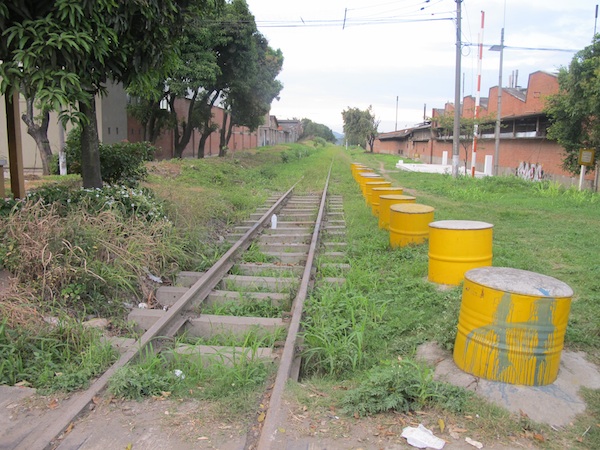
Best known as the international capital of salsa, Cali – the third largest city in Colombia and officially called Santiago de Cali – may soon gain acclaim for more than a showcase of world class dance moves. The election of Rodrigo Guerrero in 2012 and passionate leadership at the helm of many agencies seems to point to a city on the brink of a renaissance anchored by the “Green Corridor” project.
An old rail track stretches 15 km across the middle of the city in a North-South axis. It once connected to cargo activities in cities immediately outside Cali such as Yumbo, which is largely industrial, in the Valle del Cauca department. The Green Corridor is a reimagining of the rail corridor as a multi-purpose greenway with BRT, bike lanes, high quality walking facilities and verdant public spaces. There are also plans to link social and affordable housing developments near the corridor.

The city’s goal is for every city resident to be within 300 meters of a station eventually. Cali’s BRT system, known as Mio, already has a total network coverage across 94% of the city – including feeder, pre-truck and trunk bus lines. One of the most important corridors is perhaps Carrera 5 which links to Aguablanca, the poorest neighborhood in the Northeast, and transects all the way South to a cluster of universities and IT companies. The line also passes near a decommissioned military based that is bound for redevelopment either as public space, affordable housing and/or a private country club.
Aguablanca currently has 400-500 residents per hectare. By developing more social housing units near transit, the pressures on infrastructure and living space in this neighborhood may be relieved. Minimums parking requirements impact affordable housing creation and also ridership on transit. Rethinking parking land use regulations can help realize even more affordable housing units near highly accessible transit corridors.
Cuidad Paraiso, another high profile project, includes plans to add commercial space, public space, government buildings and affordable housing to the city’s most neglected downtown district near the Santa Rosa Mio station. By updating existing land use regulations, eliminating parking provisions, and leveraging private investment, the city hopes to make social and affordable housing and direct density growth around Mio stations.
There is no shortage of redevelopment projects in Cali, and the city’s efforts to direct growth in the coming years around the highest capacity transit lines and the Green Corridor will promote mixed land use, curtail sprawl near the city’s periphery, and achieve the city’s long-term mobility and spatial objectives.

